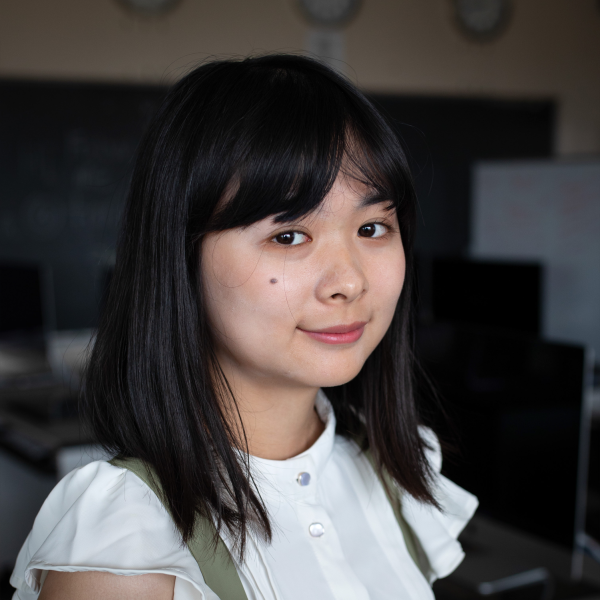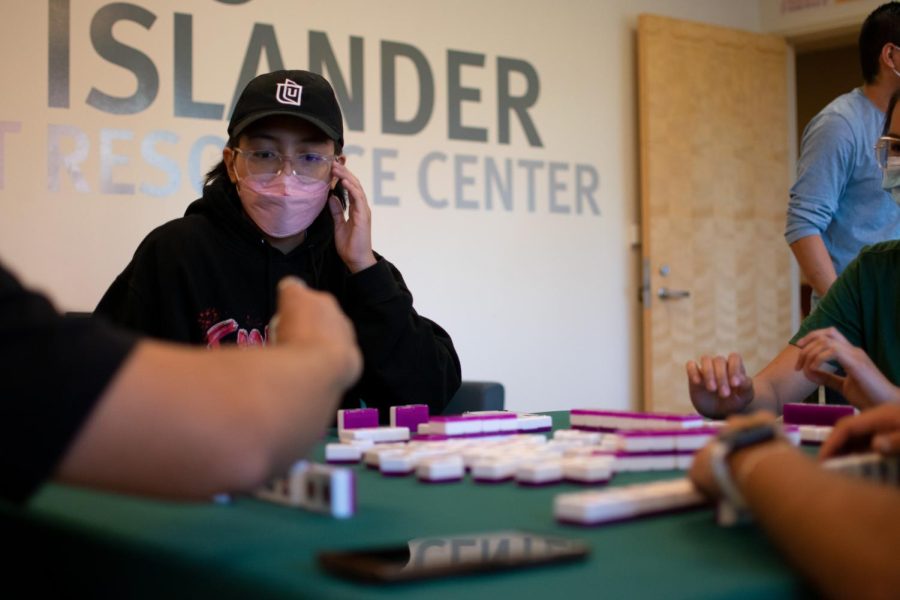Students experience mahjong for the first time with Mahjong Monday
P Dacayan, graphic design major, looks over options while playing in the second table that was set up for Mahjong night at the Asian Pacific Islander Resource Center.
The Asian Pacific Islander Student Resource Center (APISRC) held Mahjong Monday on Sept. 12. Two tables were set with black tablecloths and mahjong sets on top.
Mahjong is a tile game that was developed in Shanghai around the 1800s, but the exact date of its creation is heavily debated. It contains 144 tiles and two dice, and is also known as “China’s national past-time.”
Often, families and friends will gather to play and gamble. It has become a way for Chinese households to create friendships and bonds.
The game’s popularity has led to different variations within Asian communities. The version that was taught during Mahjong night was the Filipino one.
“My partner is Filipino and I was introduced by his family, and the way we played, we excluded flowers,” said Anh Le, the program coordinator at the APISRC. “Playing with three sets and organizing that was a lot to handle, so I felt like that was simplified enough for beginners to play.”
Each game allowed for only four players, so board games were brought out for those waiting for their turn. Out of a dozen students that attended the event, only a handful knew how to play.
Tammy Xaypraseuth, a computer science major, has been playing Mahjong since she was young.
“We used to have a Mahjong set at home, and my sister and I were curious about what it was, and how to play so our dad taught us and ever since then, we would just keep playing it,” said Xaypraseuth.
Many of the first-timers remember watching their families play when they were little, but never got the chance to learn.
“I know my family played a lot when they lived in Hong Kong, and they talked about it a lot, so I just want to know how to play,” said Alisa Quon, a chemistry major.
Resource center coordinator, Anh Le, gave an introduction on how to play the game. Le simplified the rules of the game to make it more beginner-friendly.
The goal of the game was to get a set of five and a pair. Each set consisted of either three matching tiles or three consecutive tiles of either sticks, characters, or circles. Flowers and other tiles that didn’t match the three tile types were thrown out throughout the game.
Students came to learn about Mahjong to get closer to the culture and the history of the game.
“My dad used to play mahjong, but I never played, so now I am interested because I know that this game has history behind it,” said Nancy Guan, a history major. “I wanted to play first and then learn the history.”
Kevin Cardoso, a biology major, came to learn more about Chinese culture after he became curious when his coworkers spoke the language.
“I wanted to learn how to play Mahjong, and immerse myself in a Chinese environment,” said Cardoso, “Learning about other cultures makes you more humble, more understanding as a human being.”
Mahjong is an activity that had people gather together and play at their homes, but the pandemic halted the gatherings.
“When I was younger, my parents used to have their friends and they used to play like every weekend,” said Victory Chu, a business administration major. “After the pandemic, it kind of fell out and they didn’t do it anymore so the house was kind of quiet.”
Mahjong Monday attracted alumni to campus. Alan Cheung graduated from Cal State LA in 2018, and came back because he loves playing mahjong.
“I always played mahjong with friends, but through the pandemic we almost stopped all the activities,” said Cheung.
There are plans to make Mahjong Mondays a monthly event within the APISRC.
Updated on Sept. 20 to correct a name in our photo caption

Anne To is the Editor in Chief of the UT and also the co-Station manager of the Golden Eagle Radio. She loves working on audio production with radio, podcasting,...

Erick Cabrera is a fourth year journalism major. He is the staff photographer and reporter for the University Times. During his free time, he enjoys film...










